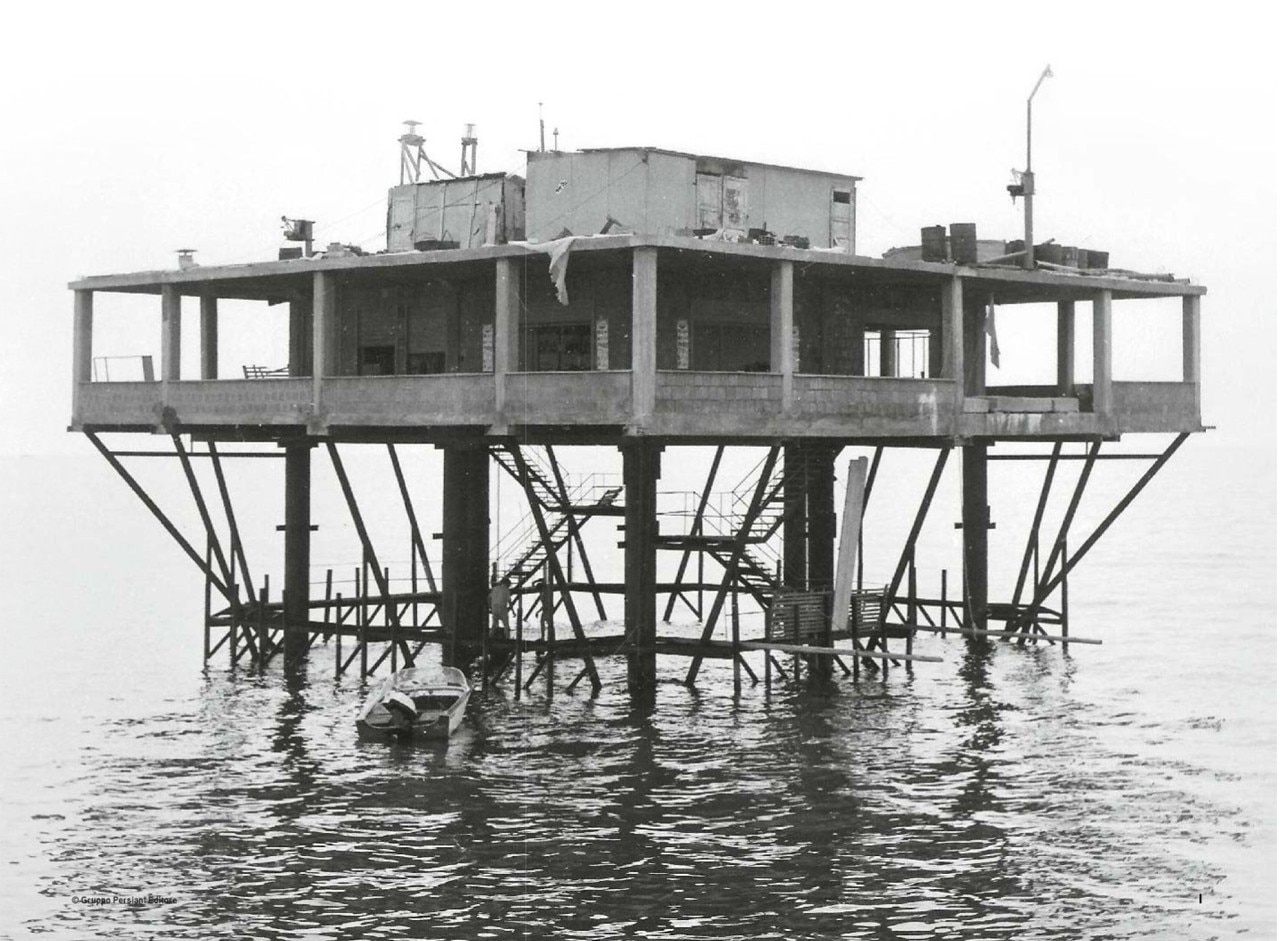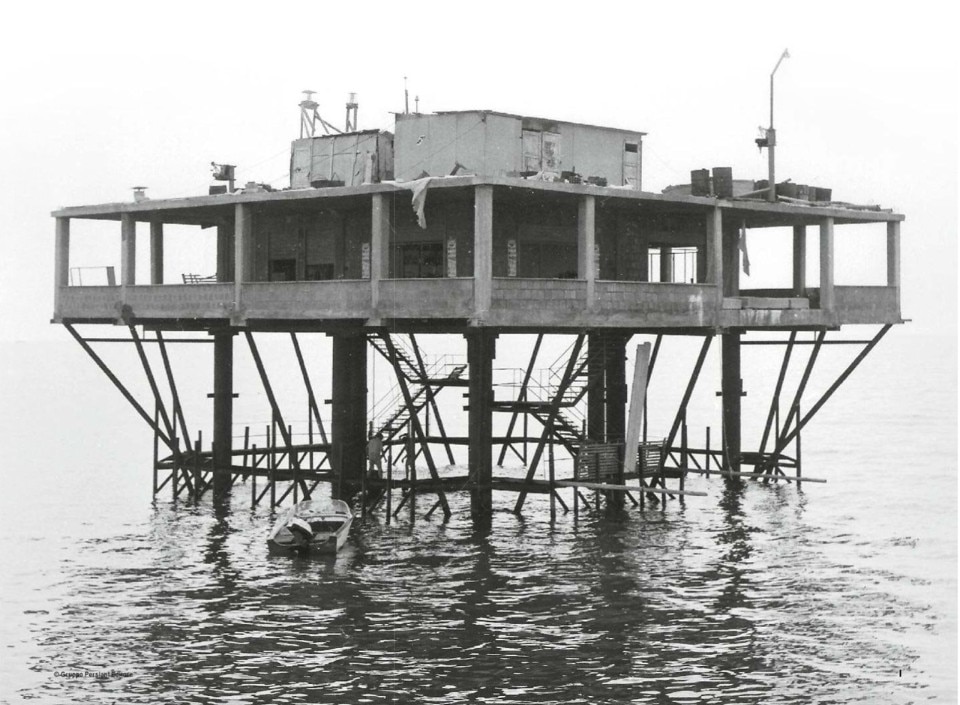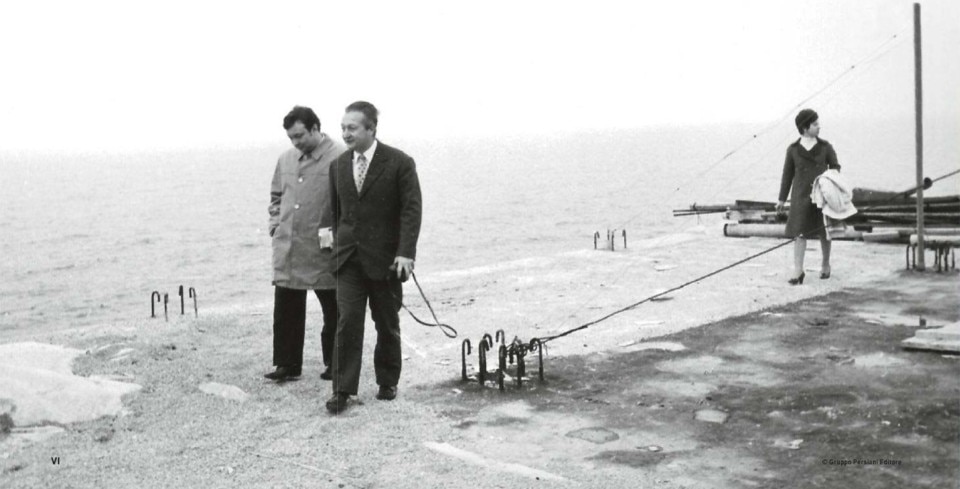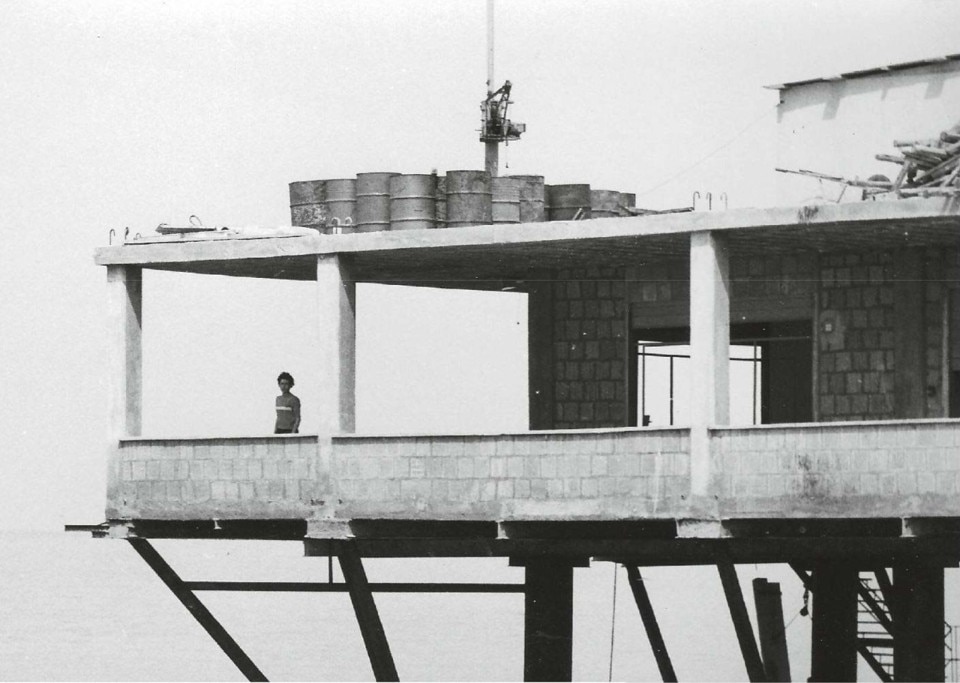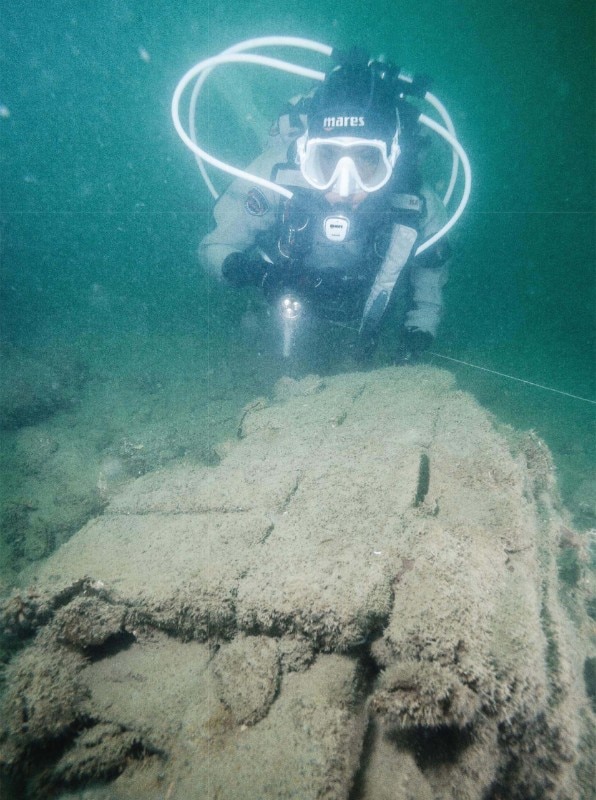“Should our ocean liner have found itself in the northern Adriatic in early 1968, approximately six nautical miles off Rimini, its passengers would have spotted a very singular work of architecture: a small platform, square in plan, immobile in the middle of the sea. They would have noted how it is almost identical in size to the Villa Savoye, and might have observed how the deck was suspended above the Mediterranean by slender pilotis, between which boats could dock and unload passengers in much the same way in which automobiles offloaded their passengers directly into Le Corbusier’s iconic house via its underbelly.”
Closing his years at Domus, Joseph Grima chose to articulate a complex metaphor around the unveiling of quite an unsung story that had been basically overlooked till then by all the media, except some minor although overexcited news section of the late 60s.
During 1967, Italian engineer Giorgio Rosa developed and finaced the construction of “ (…) a hybrid project of marine engineering and political experimentation”, in a 20 x 20 metres square stretching above international waters, ready to address that small world that was experiencing a full explosion just 11 kilometers off there: the Rimini Riviera, bursting with mass tourism. The platform could host both hospitality and commercial function, and was initially inhabited by three people taking care of its management and maintenance. This island could represent since the beginning —undeclaredly and probably unconsciously — one of the few realizations of those visions that — once entrusted the technology, the machine, with the main tasks of human labor — developed some completely re-written city and territory, challenging rules and conventions until then globally accepted: New Babylon by Constant Nieuwenhuys, the Cities by Archigram, the somehow less exotic No-Stop City by Archizoom.
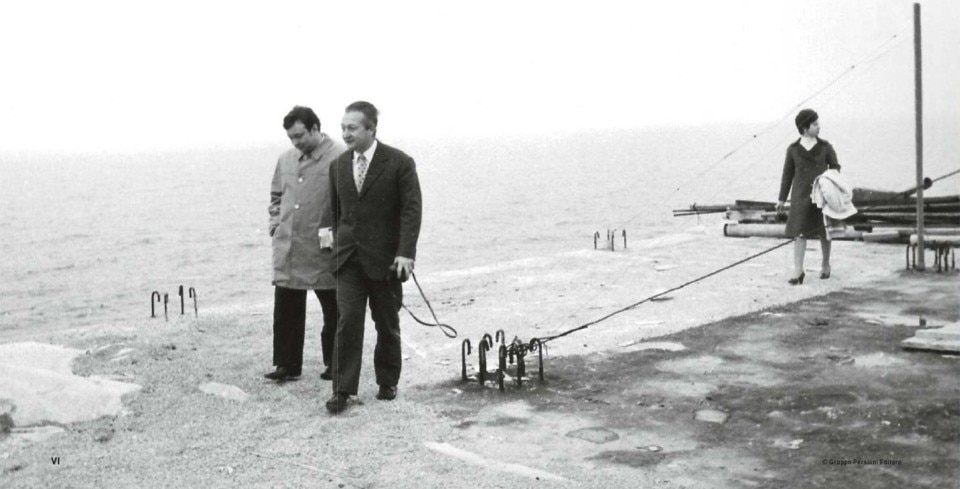
A very singular work of architecture: a small platform, square in plan, immobile in the middle of the sea (…) almost identical in size to the Villa Savoye (…) the deck was suspended above the Mediterranean by slender pilotis, between which boats could dock and unload passengers in much the same way in which automobiles offloaded their passengers directly into Le Corbusier’s iconic house via its underbelly
“ The platform declared independence on 1 May 1968, under the Esperanto name ‘Esperanta Respubliko de la Insulo de la Rozoj’ (the Esperanto Republic of Rose Island) with Rosa as its self-declared president and Esperanto as the official language. The engineer-president was careful to point out to the Italian authorities the fact that the Republic was located in international waters, and declared his intention to open a number of facilities in the island, including a restaurant, bar, living quarters and a post office. Soon afterwards Rose Island issued its own stamps, including one showing the approximate location of Rose Island in the Adriatic Sea. The new State also declared its intention to mint a new currency, the ‘Mill’.”
De factu, the idea of such new cantilevered republic was equally scary to everyone. It scared the central State, as well as the Communists, who were worried about the creation of some uncontrollable tax-free zone; it scared non-Communists, who thought the island could become some Communist outpost; and generally, it was located on the most sizzling checkerboard of all Cold-War time, the Adriatic sea, which constituted one of the several fragile interfaces between the two opposite blocks.
It did not take too long, consequently, to the Italian Government to aggressively and harshly react:
“ (…) at 7 a.m. on Tuesday 25 June 1968, 55 days after the declaration of independence, a group of Carabinieri and Guardia di Finanza officers landed on the platform and took control. On 11 February 1969, the Italian Navy strapped explosives to the piloti-pylons and sank Giorgio Rosa’s micronation to the bottom of the Adriatic, where it still rests.”

De factu, Rose Island was something non-compliant — we could nowadays say non-binary — because it could not be processed by the codes and mechanisms of interpretation and exercise of power characterizing its times. Proper interpretations of this phenomenon came in fact many years later: a DVD released in 2009 giving an account of the whole story; several articles including this Domus column from 2013; last, L’isola e le rose (2019), a novel by the former mayor of Rome Walter Veltroni.
Domus wanted to establish a connection between a first metaphor, the magazine as an ocean liner, and a second one, Rose Island as a call to reflection; a reflection on power and responsibility of technology as a tool to realize many otherwise utopian visions.
“ (…) Rosa’s self-funded platform was made possible by one of his engineering inventions: pylons that could be floated out to sea and then used to drill their own holes into the seabed, rather like self-tapping screws. At a time when Silicon valley was still scrubland, Rosa understood that technology would democratize innovation to the point that even sovereign nation-building could become a popular weekend activity for middle-class professionals, and there would be nothing the State would be able to do about it.”
At a time when Silicon valley was still scrubland, Giorgio Rosa understood that technology would democratize innovation to the point that even sovereign nation-building could become a popular weekend activity
Sure, it was 2013. References were therefore made to “ (…) bitcoins worth hundreds of millions of dollars (…) you can buy dinner in restaurants in London, Berlin or New York with” or “ (…) plans for artificial island nations (that) are alive and well in Silicon Valley , where Peter Thiel, the co-founder of PayPal and member of the Valley’s venture-capitalist oligarchy, is sinking millions of dollars into the development of a stateless floating platform unashamedly christened ‘Libertarian Island’.”
Sure, it was 2013. So, in the same Domus issue n. 971 the contribution by Kazys Varnelis on technology as our modernity, and the one by Grima and Lorenza Baroncelli concerning that Cody Wilson who had just 3D-printed a perfectly working gun could find their place in a broader exploration of the role of technology that was drawn from the story of Giorgio Rosa’s platform. An anticipation would as well claim that “ (…) if it were a nation, Facebook could soon be the most populous on Earth.” The final call in the column was to foster a “ (…) rebirth of the Modern, (…) unless we are to surrender the collective project we dreamed of throughout the 20th century to the anarchic individualism of the 21st.”
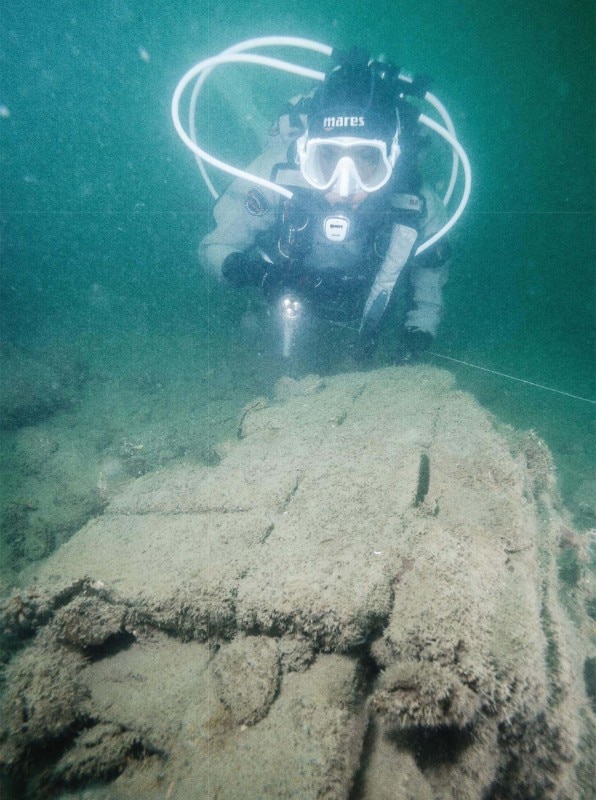
As Kazys Varnelis observes, modernism — the city born at sea from CIAM ooon the SS Patris II — is our antiquity: our modernity is technology.
This happened seven years ago. This happened right before an outburst of phenomena that could not exactly be called radical, but could be decisive enough to make such claimed innovations no longer a priority, to make their terrain even more dangerous. Media-powered terror, words short-circuiting into concrete geopolitical reality ( “the Self-declared Islamic State”), anti-migratory psychoses, monopolistic centralization of social media basically delivering a large part of interaction, debate and the market itself to the rules of a single private property, way much more than any Giorgio Rosa could have ever done with his platform. The realm of freedom has rearticulated in a much more uncomfortable layout than it could be 50 years earlier, when it already failed to assimilate the Rose Island.
What is left is the story of an Esperanto republic, abruptly erased ope legis upon allegations of non-compliance, the story of the repression of a diversity that could have helped re-questioning many assumption concerning rights, boundaries and some claimed connections between land, identity and community.
“In retrospect, it’s hardly surprising that magazine never published Isola delle Rose; technically speaking, the innovation it represented was minor, and on the political stage it was nothing more than a background glitch in the ongoing drama of the cold war. There were plenty of other, more worthy topics of discussion on the bridge and the dining halls of this liner.”
The story sprung in the heat of May 68, would not survive the Summer of Love, would nonetheless forecast the forthcoming Italian Hot Autumn. Rien à faire. Not even the Revolution itself could suit a 400-square-metres piloti-founded utopia, structurally aligned, politically unfit to any alignment. An irrevocably secondary issue. Unitl the time came for us to recognize what we really had, lying deep down on Adriatic seabed: the shattered bricks of some clumsy—looking, but at least concretely attempted, New Babylon.

